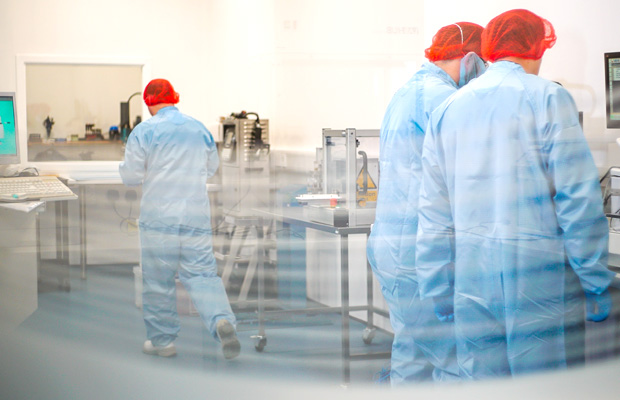Go with the flow!
The field of point-of-care (POC) diagnostics offers the enticing possibility of providing rapid diagnostic results in non-laboratory settings, and screen-printing provides a highly capable sensor as the portable detector for this technology.

Screen printing consists of depositing successive layers of special inks and/or pastes onto a substrate. Understanding the rheology of these inks and pastes is vital to achieve optimal print quality.
Rheology is the study of how matter flows and applies to substances that have a complex structure, including suspensions and polymers. The flow, or viscosity, of these materials change with changing conditions and are described as shear thickening or shear thinning. For example:
• Quicksand gets thicker if you apply pressure to it, making it difficult to escape from if you struggle to get out (shear thickening).
• Ketchup is a classic shear thinning liquid. The viscosity of the sauce reduces if the bottle is shaken and/or squeezed allowing it to pour easily.
Inks and pastes used for screen printing should ideally be shear thinning, like ketchup. This will allow the viscosity of the ink/paste to reduce with the application of shear and then return to the original viscosity when the shear has been removed.
During the printing process, the inks will experience shear forces from a variety of sources including mixing prior to printing and from the squeegee during printing. This can have a positive impact on the quality of the print. For example, a shear thinning ink that has undergone shear by the squeegee will provide good ink transfer onto the substrate. Minimal spreading will also be achieved due to the increase in the ink’s viscosity upon the removal of shear.
Knowledge of the rheological properties of the printing ink/paste is valuable in determining the quality of the print. However, these properties may change depending on other factors, such as evaporation of the solvent from the ink/paste. Optimisation of the process will ultimately ensure the reliable manufacture of high-quality prints.
Cost effective, screen printed sensors continue to lead the way in providing a vital analytical tool to satisfy the increasing demand for rapid, sensitive, and selective devices that can be used in a wide range of applications. Pioneering organisations in the field of diagnostics are realising the opportunities that are available in the development of such sensors.